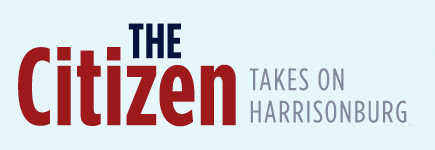By Randi B. Hagi, assistant editor
The plan for reopening Harrisonburg city schools in the fall by having students alternate days in the buildings won the school board’s unanimous approval Tuesday.
The “return to school plan,” which was first publicly presented in a special meeting last week, changed only slightly, such a few minor wording edits, but Superintendent Michael Richards told the board that given the shifting landscape of the COVID-19 pandemic, further changes are likely before the first day of school on Aug. 31.
“We need to be nimble,” Richards said. “The guidance is changing … we’re hoping data looks better in August.”
The plan details an alternating attendance schedule, in which most students in grades two through 12 attend school in person on either Monday and Thursday or Tuesday and Friday. Preschool through first grade students will attend four days a week, as will “identified students,” including those with special education needs and English language learners. Families can also choose for their children to stay home entirely and engage exclusively in distance learning.
“This is a starting point and it will continue to be adjusted in whatever direction the data leads us to,” School board member Nick Swayne said.
One guideline that has changed — but has not yet made it into the division’s plan — comes from the World Health Organization and American Academy of Pediatrics. Richards told the board those organizations have said three feet of social distance is acceptable, as long as other protocols, like wearing face coverings, are followed.
To that end, one wording edit to the division’s original draft plan now makes it so that students and staff members “must” wear face coverings if developmentally appropriate and when physical distancing isn’t possible. The previous version said face coverings “should” be worn.
Richards noted that different organizations have published different guidelines as to what age is “developmentally appropriate” to begin wearing masks – anywhere from age two to 10.
“If we want to get more and more students back to school with the goal of getting all students back to school, I think masks are a key part of that,” Richards said. He likened the requirement to having to wear shoes at schools or in stores. And while the plan requires face coverings for most middle and high school students, Richards said they may expand that to include elementary students as well.
About a dozen local residents wrote or called in to the meeting to comment on the plan.
One mother of a high school student wrote an email to the school board saying that “it is unhealthy to wear a mask,” and she considered it against her individual rights.
Most of the others had procedural questions – such as whether online classes would be recorded, whether distance learning would remain an option after a vaccine becomes available, and whether it’s reasonable to expect younger students to social distance.
While the district leaders didn’t answer those questions at Tuesday’s meeting, Richards said staff would create a frequently asked questions page on the division’s website to address them.
School board member Kaylene Seigle asked if face coverings would be available if a student or staff member comes to school without one.
Craig Mackail, chief operating officer, said the division has three storage units full of COVID-19 supplies and will provide free paper and cloth masks to anyone in the schools who needs them.
An “equity nightmare”
Swayne said he was concerned about how working parents will find childcare during the assigned days in which the students would be learning from home as part of the alternating schedule.
“To me that’s a huge problem because many families are not going to be able to pay for childcare,” Swayne said. “I know you all have thought about that, but that is a big concern for folks.”
“These [concerns] are what are keeping educators up at night,” Richards acknowledged.
Richards said he has been meeting with area daycare providers to coordinate their services with the division’s schedule and ensure they are affordable.
“The hybrid model is hugely inconvenient,” he said. “We’ve got to figure out a way to fund this so parents aren’t burdened … This whole pandemic has been an equity nightmare.”
School board member Deb Fitzgerald, who served as a liaison to the return to schools task force, said some students can’t take the same risks as others: for example, if they have an immunocompromised sibling or live with elderly grandparents.
“It’s a huge exercise in balancing harm,” she said.
Richards said a second survey will go out to families before the start of the school year with questions tailored to each student about daycare, school meals and transportation needs.
“We want a hundred percent response,” Richards said. “We’ll even go door to door if we need to.”
He said the first survey about returning to school, which was presented last week, garnered a 27% response rate. But he said that was based on the number of students, rather than households. So if families responded but had multiple students in the school system, that wasn’t reflected in the response rate. Richards said the response rate was closer to “50% or higher … which is still not adequate.”
Other precautions the division is taking include:
- Setting up 110 hand sanitizer stations throughout the schools;
- Asking teachers to provide some minor first aid, such as bandaging a small cut, to prevent undue traffic through nurses’ offices;
- Separating nurses’ offices into a waiting area, a regular clinic area and a clinic area for those with COVID-19 symptoms;
- Supporting teachers with planning time and professional development to adapt to the hybrid model of educating;
- And being vigilant about students at risk of “dropping off the grid” in the distance learning environment.
Journalism is changing, and that’s why The Citizen is here. We’re independent. We’re local. We pay our contributors, and the money you give goes directly to the reporting. No overhead. No printing costs. Just facts, stories and context. Thanks for your support.









